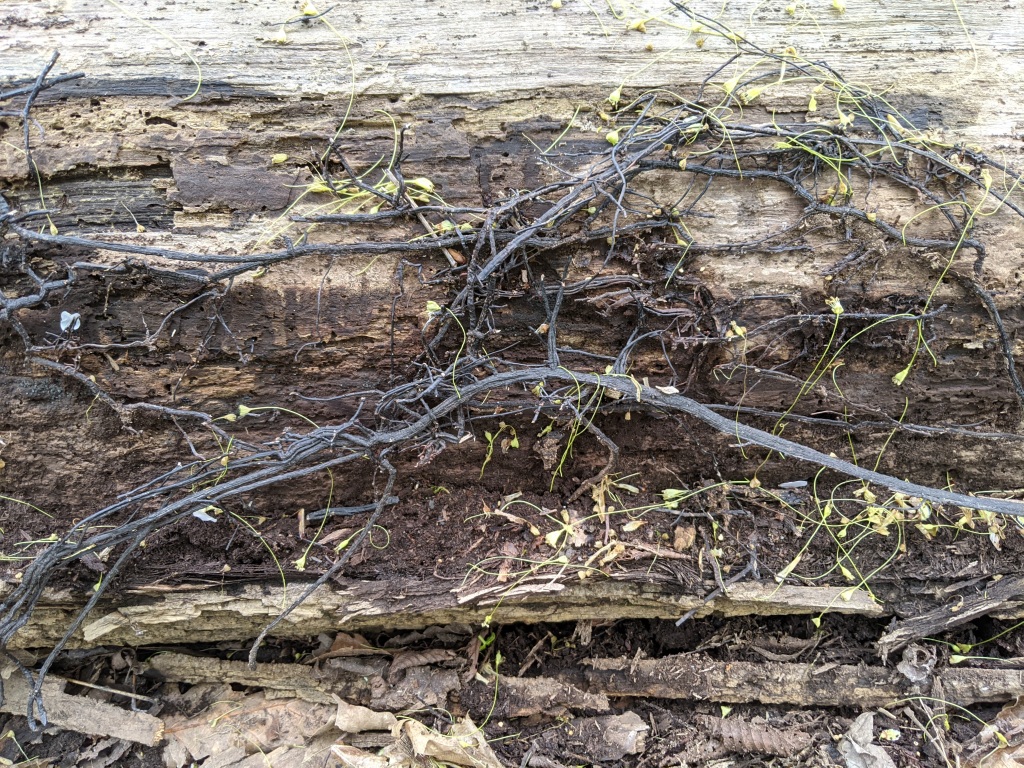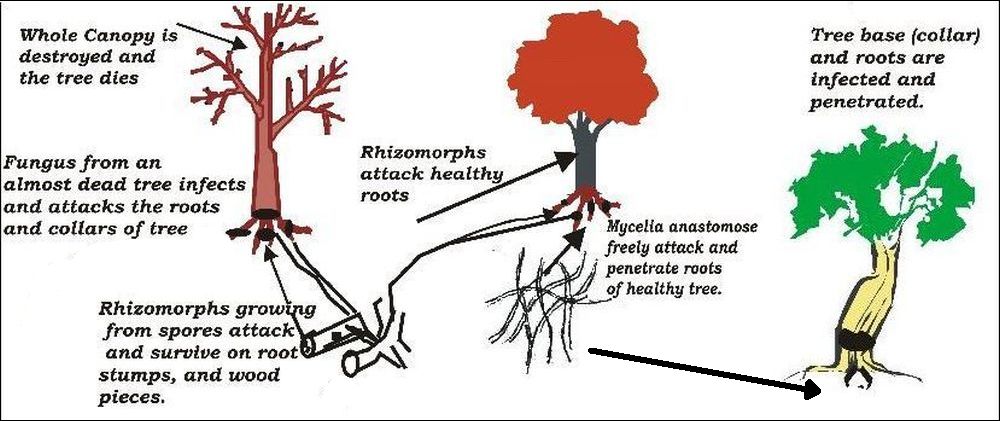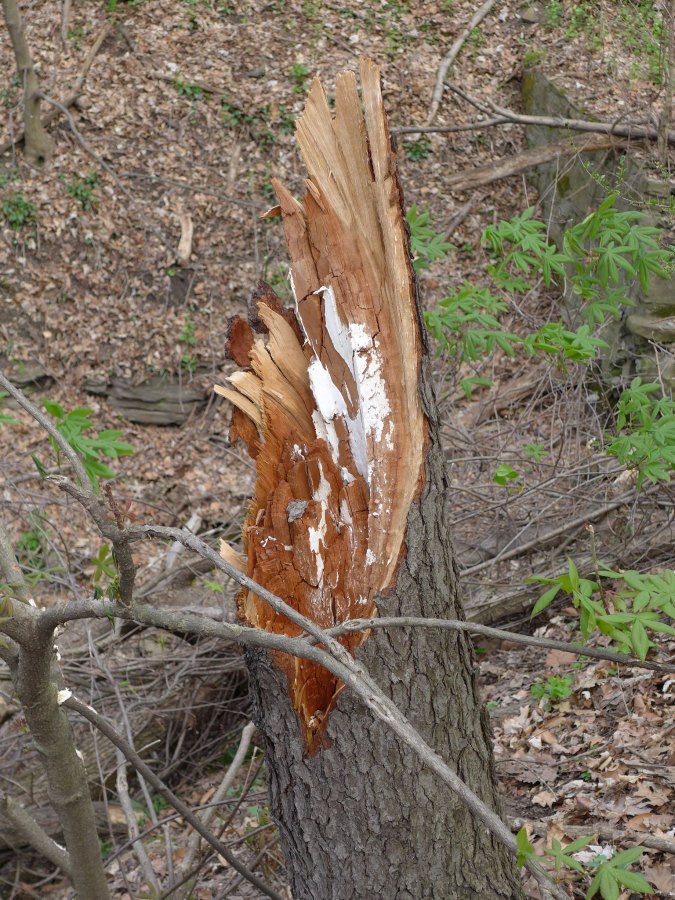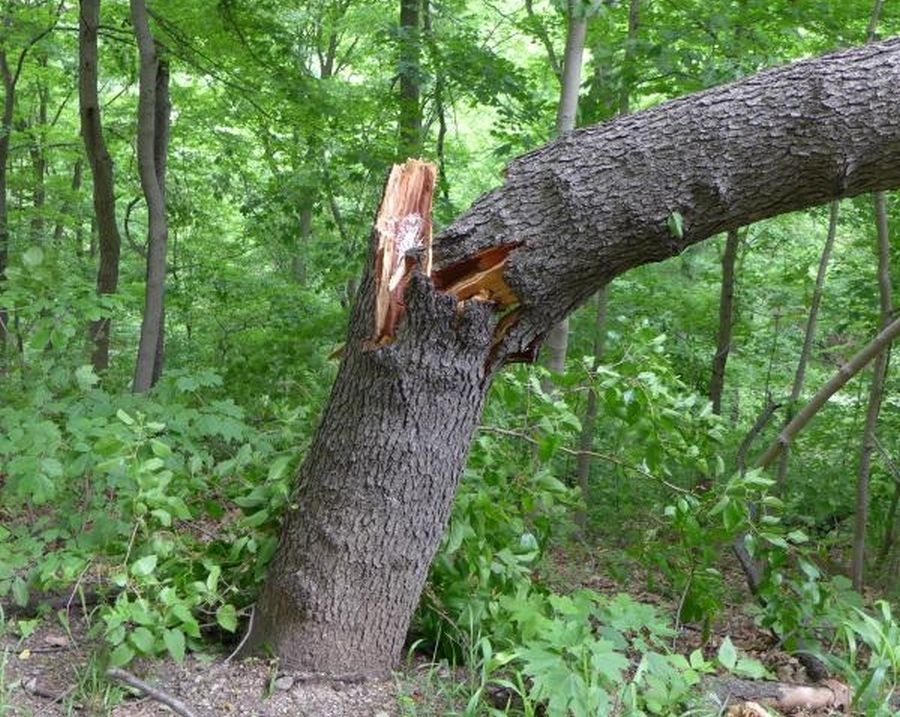
9 May 2021
Have you ever seen these long black ropes draped on a fallen log? They were hidden under the bark before the tree died, and they’re the reason the tree died. These are mycelial cords or rhizomorphs of Armillaria, a genus of fungi that ultimately kills trees. It attacks the trees from underground.
Armillaria consists of 10 species which are easiest to identify by their mushrooms, the reproductive stage of the fungus. Honey mushrooms appear near the base of an infected tree but the spores rarely cause infection in other trees.

Instead, Armillaria spreads by the rhizomorphs shown at top which travel only eight inches below the soil surface, advancing about 3.3 ft (1 m) per year. As they make contact with another tree they invade the roots and then the trunk. If a tree is already infected it will spread the fungus via root grafts.

Armillaria spreads so far and lives so long that a single Armillaria ostoyae in the Malheur National Forest in Oregon was found to be 2,400 years old and the largest living organism on earth.
As the infection takes hold, the fungus invades more deeply via white mycelium sheets that damage the roots or girdle the tree. Here a fallen black cherry reveals its cause of death.

Schenley Park is riddled with Armillaria but we have no hint that a tree is invaded until it topples, sometimes at the roots.

Trees are so stoic. No matter what attacks them, they just have to stand there and take it.
(photos by Kate St. John and from Wikimedia Commons)
Just saw two redpolls on my balcony